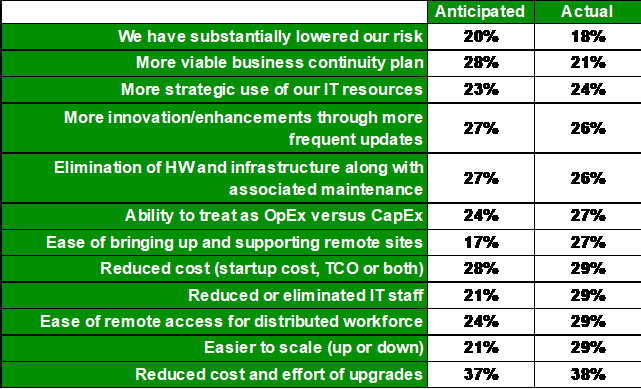Technology & Innovation
Cloud vs SaaS: Which delivers the most benefits?

A few years ago, software deployment options were barely considered. Accounting solutions were predominantly licenced and deployed onsite, or via a third party.
“Cloud” wasn’t part of the business lingo, and “SaaS” was either unheard of or poorly understood. While complementary solutions like Customer Relationship Management (CRM) were headed in that direction, entrusting the transactional system of record of your business to the cloud required a higher level of trust that had not yet developed.
How the world has changed! Today, most businesses have a cloud strategy, and the shift to the cloud and SaaS has begun in earnest. When cloud was less popular, decision-makers worked hard analysing the pros and cons and understanding their options. With today’s vendor and media hype, the move to cloud appears inevitable. And as people and companies accept the inevitable, they stop looking at their options with a critical and questioning eye.
Mint Jutras has been following perceptions and trends in cloud and SaaS since 2011, and carefully distinguishes between the two. It does this through its annual Enterprise Solution Study, an electronic survey collecting data from hundreds of respondents from all types and sizes of companies. In 2019, there were 464 participants. Previously, it asked those considering a SaaS solution (but not yet using one) what appealed to them about SaaS.
Their responses are summarised in the “Anticipated” column in Table 1. Those already using a SaaS solution were asked what benefits they had achieved by moving to SaaS.
Table 1: Anticipated versus Realized Benefits of SaaS. Source: Mint Jutras 2019 Enterprise Solution Study

Participants were allowed to select any and all that applied, but the answers this year were disappointing.
Over the years, the potential benefits have evolved but remained quite similar. Year after year, the percentage of participants recognising the potential benefits has increased – until this year. With almost every software vendor jumping on the cloud bandwagon and aiming to be the biggest and best, it appears that many business users are doing the same without properly grasping the potential benefits. Without this knowledge, many benefits are not being realised.
SaaS vs cloud: Is there a difference?
Non-technical ERP end–users often don’t know, or even need to know, the different deployment options or how they’re paid for. It is, however, critical to understand the various options in order to maximise the benefits.
Let’s start with a basic definition of cloud and SaaS. Many use these two terms interchangeably, but there are some important differences. So, let’s distinguish between the two:
- Cloud refers to access to computing, software, and storage of data over a network (usually the internet). You may have purchased a license for the software and installed it on your own computers or a third party’s, but your access is through the Internet and, therefore, through the “cloud,” whether private or public.
- SaaS is exactly what is implied by the acronym: Software delivered as a service. It is not delivered on a drive or other media to be loaded on your own (or a third party’s) computer. It is typically subscription-based, and does not reside on your computers at all.
Therefore, we can conclude that while all SaaS is cloud computing, not all cloud computing is SaaS. Cloud delivers many benefits, but SaaS delivers even more.
Deployment options
Deployments can be categorised as follows:
- Software as a Service (SaaS): Software is delivered only as a service, not on a drive or other media to be loaded on your own (or another party’s) computer.
- Third party hosted: Software is licensed by you, but you pay another party to manage and maintain (host) hardware and software.
- Hybrid: Some parts are licensed and maintained on-site and others (e.g. add-on modules) are SaaS.
- Hosted and managed by your ERP vendor: Software is licensed by you, but you pay your ERP vendor to manage and maintain (host) hardware and software.
- Traditional licensed on-site: You license the software and are responsible for managing and maintaining it on your own premises.
Traditional on-site or hosted solutions might (or might not) be accessed via the cloud, although this is more likely to be a private cloud. Those delivered as a service (SaaS) might be offered as multi-tenant or single-tenant (also known as multi-instance) or both. For more on this, click here.
Discover how CFOs are playing a key role in leading the digitalisation of medium-sized businesses and learn how to move from a 'historian' to a 'visionary' within your business.CFO 3.0: Digital Transformation Beyond Financial Management








Ask the author a question or share your advice